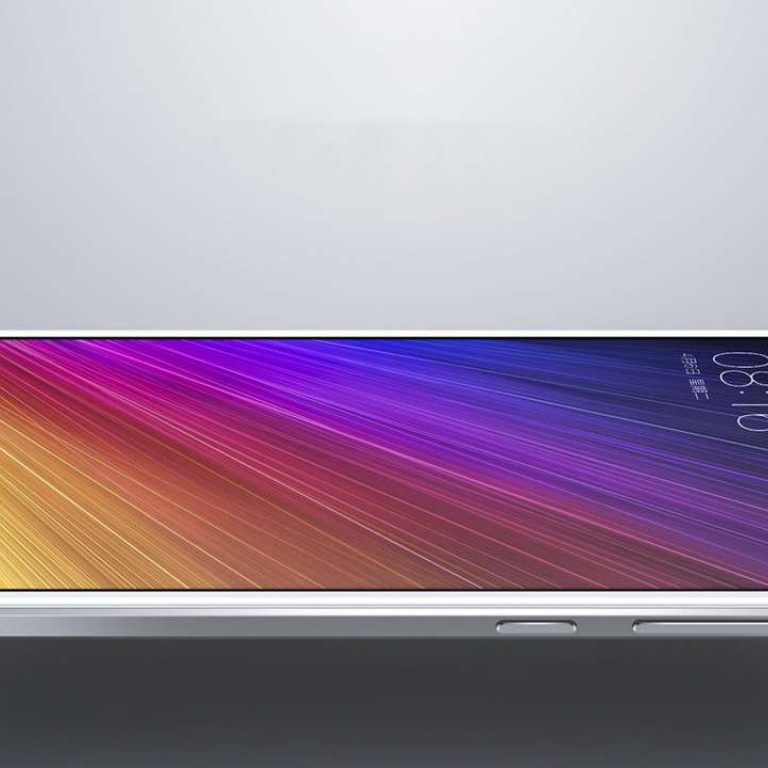
Review: Xiaomi Mi 5s Plus may be cheaper than a big-brand handset but you get what you pay for
Some features it does very well but other aspects of the phone – especially the slow camera – are frustrating. Is it enough to help Chinese brand regain ground lost to competing smartphone makers?
The Xiaomi Mi 5s Plus has the faster Snapdragon 821 processor, 6GB of RAM and a huge 3,800 mAh battery – all for just HK$2,999. Will this flagship model help the Chinese brand regain ground lost to other, equally competitive mainland smartphone makers?

Design and hardware
The Mi 5s Plus has a body made of aluminium. There are plastic strips on the top and bottom of the back of the phone that break up the metallic slab. The most noticeable issue is that the metallic edges along the front of the phone are quite sharp rather than being filed down. It’s not something that will interfere with usage but it’s something that feels annoying over time.
Review: Xiaomi Mi Mix – some day all phones will look this way
The glass on the front does scratch quite easily, and thus needs a screen protector. Other than that I’ve no complaints when it comes to durability. I’ve dropped the phone a few times but it’s holding up very well without a dent.
Features
I’ve run into numerous issues since day one, which is disheartening. Google Play download speed is extremely slow, Android Pay doesn’t work, Pebble (smartwatch) notifications are sporadic, it’s incompatible with the Dobby selfie drone, wired headphone volume is too low, there are duplicate notifications … just to name a few.
I know Xiaomi phones go through many firmware updates over their lifetime but that doesn’t mean everything is a priority. For instance, Google Now on Tap was missing on the Xiaomi Mi 5, and it’s still missing in the Mi 5s Plus – that’s after one hardware refresh and a new firmware version.
How Apple lost China to two unknown local smartphone makers
On the plus side, Xiaomi’s own software, MIUI 8, allows great customisation. It runs on Android Marshmallow but beyond that not much else is recognisable. It feels fresh and simple, but dig into the menus and you can get lost for a long time trying to customise every little thing.
MIUI 8 does genuinely add value by including a bunch of useful apps, such as the calculator that can do mortgages and taxes. Dual Apps allows you to use the same app with two different accounts. Second Space goes a step further and creates a complete second user interface environment – say one for work and one for personal. It’s like having two phones; it even shows you when “First Space” has a new notification.
Review: Huawei Mate 9 – handsome phablet that runs and charges very fast
The bottom-facing speaker is a surprise. The sound it produces is rich, with a fair amount of bass, sounding even more pleasant than the iPhone 7.
The dual 13-megapixel camera is a disappointment. It’s slow to snap, autofocus and tap to focus are ineffective and the resulting quality is just passable. It’s mind-boggling how slow the camera is when even those using the earlier Snapdragon 820 chipset can get it right.


One of the dual cameras is monochrome and the other colour. “Stereo mode” is not switched on by default, and when taking a photo in this mode, both cameras take a snap and combine them for best results. The problem is, the differences between single and dual camera mode are not very significant.
Xiaomi sees little impact from shrinking smartphone sales
There is a tiny bit more detail and sharpness and less noise, but at the same time exposure is erratic; nighttime shots appear dimmer (underexposed) and brighter (overexposed) randomly. The single camera mode with HDR does a better job.

Performance and battery life
The Mi 5s Plus is one of the first to market with the brand new Snapdragon 821 processor. It runs 10 per cent faster than its earlier 820 model.
The 3,800mAh battery means solid battery life. My typical usage – running Medium, Spotify and Netflix over Bluetooth audio and social media, e-mails, web browsing but no gaming – gives me a day and a half. Were I to forget to charge the Mi 5s Plus overnight, I’d still be perfectly fine until lunchtime the next day. That’s a 30+ hour phone, easily.

Xiaomi did well to stick with a 1080p display and while that translates to fewer pixels per square inch (roughly 390 ppi), it does also mean the display is not always going to be the biggest battery drainer despite its 5.7 inch phablet size.
Software-wise, everything stays in check and there is no battery drain on idle. The processor seems to be about as efficient as the Snapdragon 820, which suggests there have been no significant alterations to the architecture.
Conclusion
The Mi 5s Plus is a mixed bag. For everything it does well, it falls flat with another. The price is one consideration because you’re getting top specs for under HK$3,000, which is far cheaper than models with similar specs by other brands.
But as always, spec sheets are only half the story, as the Mi 5s Plus is clearly proving here. If you need to stay within budget, know that you’re not getting something at exceptional value for a low price. You’re getting what you pay for.

Key specs
Dimensions: 154.6 x 77.7 x 8 mm
Weight: 168 g
Screen size: 5.7 inches
Screen resolution: 1080x1920 pixels
Battery: 3,800 mAh
OS: Android Marshmallow
Processor: Snapdragon 821
Cameras: dual 13 megapixel rear camera, 4 megapixel front facing
Memory: 6GB RAM
Storage: 128GB
Colours: Silver
Price: HK$2,999
